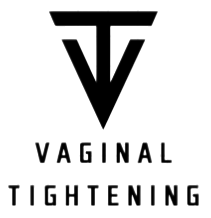Smokeless tobacco products, often perceived as a less harmful alternative to traditional smoking, have gained attention in public health discussions as a potential tool for harm reduction. These products, which include chewing tobacco, snuff, and dip, deliver nicotine without the harmful effects associated with combustion. One of the primary advantages of smokeless tobacco is that it does not produce the harmful tar and toxic gases generated when tobacco is burned, which are responsible for many of the health risks linked to smoking, such as lung cancer, heart disease, and respiratory issues. This characteristic position smokeless tobacco as a potentially cleaner alternative for adult smokers seeking to reduce their health risks while still satisfying their nicotine cravings. Furthermore, various public health authorities have started to recognize the role that smokeless tobacco can play in tobacco harm reduction strategies. By providing adult smokers with an alternative that carries fewer health risks, there is an opportunity to significantly lower the overall public health burden associated with tobacco use.

Evidence suggests that many smokers who switch to smokeless tobacco experience improved health outcomes compared to those who continue to smoke. This can lead to a decrease in smoking-related diseases, reducing the economic burden on healthcare systems that are strained by the costs of treating smoking-related illnesses. Additionally, smokeless tobacco can serve as a bridge for smokers who are not ready or willing to quit nicotine entirely. For these individuals, snus online options may facilitate a gradual transition toward complete cessation or significantly reduce their overall tobacco consumption. However, the promotion of smokeless tobacco as a public health strategy must be approached with caution. While it may be less harmful than smoking, smokeless tobacco is not without its own health risks. Users are still exposed to nicotine and other harmful substances, which can lead to oral cancers, gum disease, and other health issues. Therefore, it is crucial to implement comprehensive public health campaigns that educate users about the risks associated with smokeless tobacco while also highlighting its potential benefits as a harm reduction tool.
Furthermore, regulatory measures should be put in place to ensure that smokeless tobacco products are manufactured safely and marketed responsibly, preventing their appeal to youth and non-smokers. Balancing these considerations is essential to developing effective public health policies. In conclusion, smokeless tobacco may represent a cleaner alternative for public health when viewed through the lens of tobacco harm reduction. By providing a viable option for adult smokers looking to reduce their health risks, smokeless tobacco could play a role in decreasing the overall incidence of smoking-related diseases. However, this strategy must be carefully managed to minimize the risks associated with smokeless tobacco use and to ensure that the focus remains on promoting cessation and healthier lifestyles. As public health continues to evolve, integrating smokeless tobacco into a broader strategy of tobacco control and harm reduction may pave the way for a healthier future.
